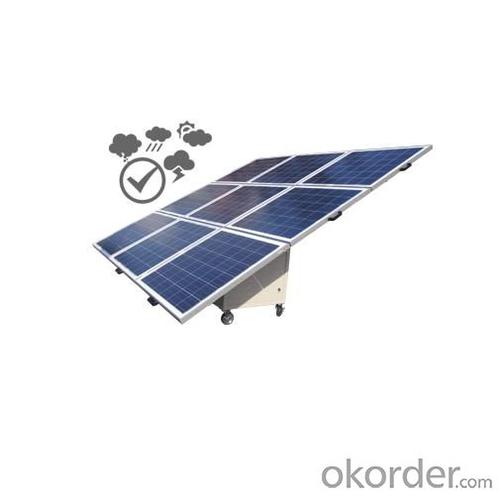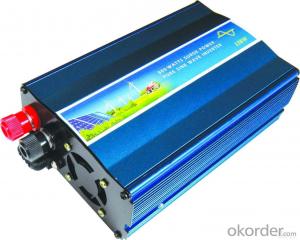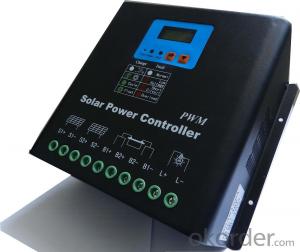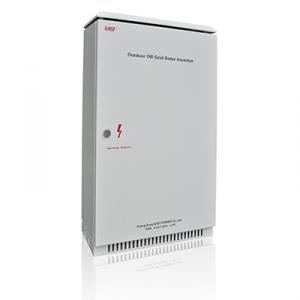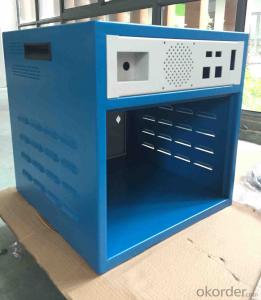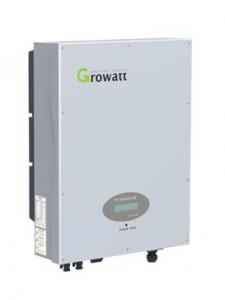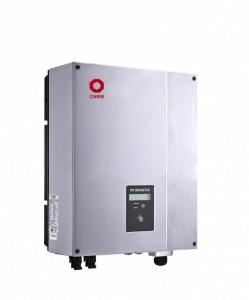5000 Watt Solar Inverter Off Grid Solar Car for Developing Area
- Loading Port:
- Shanghai
- Payment Terms:
- TT OR LC
- Min Order Qty:
- 1 pc
- Supply Capability:
- 3000 pc/month
OKorder Service Pledge
OKorder Financial Service
You Might Also Like
Off grid solar car suitable fore developping area
1.Futures
World's first, exclusively national-wide
Moveable, strong function in emergency
Huge Power output and world's top one
Self-Power generating, hard enduring
Large capacity, easy to use
Simple operation, low maintenance
Reliable quality, long lifetime
Remote monitoring, real-time data logging
2. datasheet
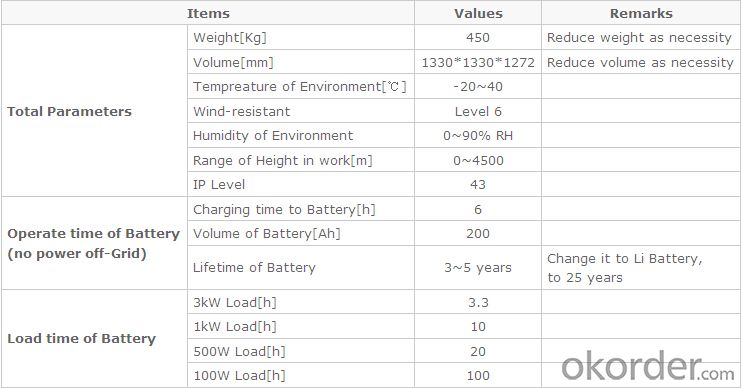
3. product certificate
EN 61000
VDE 0126-1-1
C10/11
G83/2
UTE C15-712-1
AS4777
CQC
CE10-21
EN50438
4. product outloot
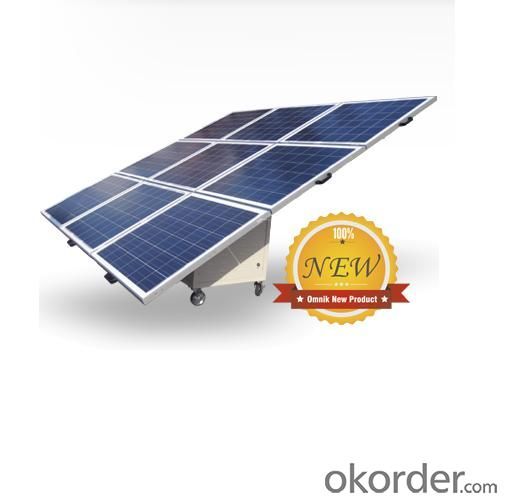
FAQ
1. What price for each watt?
It depends on the efficiency of the solar cell, quantity, and delivery date and payment terms.
2. How long can we receive the product after purchase?
In the purchase of product within three working days, We will arrange the factory delivery as soon as possible. The pacific time of receiving is related to the state and position of customers. Commonly 7 to 10 working days can be served.
We can provide you not only the solar material but also the off grid solar system, we can also provide you service with on grid plant.
4. How do you pack your products?
We have rich experience on how to pack the solar cell to make sure the safety on shipment; we could use wooden box or pallet as buyer's preference.
5. Can you do OEM for us?
Yes, we can.
- Q: Can a solar inverter be installed in a residential area?
- Yes, a solar inverter can be installed in a residential area. In fact, residential areas are common locations for solar installations, including the installation of solar inverters. These inverters are responsible for converting the direct current (DC) electricity generated by solar panels into alternating current (AC) electricity that can be used by household appliances and fed back into the electrical grid. Installing a solar inverter in a residential area allows homeowners to harness the power of solar energy and reduce their reliance on traditional electricity sources.
- Q: Can a solar inverter be used in systems with multiple solar arrays?
- Yes, a solar inverter can be used in systems with multiple solar arrays. The inverter has the capability to convert the DC power generated by each solar array into AC power that can be used in the electrical system. It can manage and optimize the power output from multiple arrays, ensuring efficient and reliable operation of the overall solar system.
- Q: Can a solar inverter be used in standalone systems?
- Yes, a solar inverter can be used in standalone systems. Standalone systems, also known as off-grid systems, are not connected to the main power grid and rely on alternative energy sources such as solar power. In these systems, a solar inverter is essential as it converts the direct current (DC) generated by the solar panels into alternating current (AC) which can be used to power household appliances and other electrical loads.
- Q: What is the maximum efficiency at partial load for a solar inverter?
- The maximum efficiency at partial load for a solar inverter refers to the highest level of efficiency that can be achieved when the inverter is operating at less than its full capacity. This efficiency is typically lower than the maximum efficiency at full load, as the inverter may not be able to convert the same amount of energy with the same level of efficiency when it is not running at its maximum capacity.
- Q: Can a solar inverter be used in a solar-powered electric vehicle charging station?
- Yes, a solar inverter can be used in a solar-powered electric vehicle charging station. A solar inverter is responsible for converting the Direct Current (DC) generated by solar panels into Alternating Current (AC) that can be used to charge electric vehicles. Therefore, it is an essential component in a solar-powered EV charging station, allowing the electricity generated from solar panels to be compatible with the charging needs of electric vehicles.
- Q: How does the maximum AC current rating affect the performance of a solar inverter?
- The maximum AC current rating of a solar inverter determines the maximum amount of power that the inverter can convert from DC to AC electricity. If the current rating is too low, the inverter may not be able to handle the peak power output from the solar panels, resulting in reduced performance and potential overheating or failure. On the other hand, if the current rating is high enough to handle the maximum power output, the solar inverter will perform efficiently and effectively, ensuring optimal energy conversion and output.
- Q: Is the PV inverter a current source or a voltage source?
- The inverter is mainly composed of a switching element such as a transistor, and turns the DC input into an AC output by repeatedly turning ON-OFF the switching element in a regular manner.
- Q: What is the difference between a single-phase and three-phase solar inverter?
- A single-phase solar inverter is designed to convert the direct current (DC) produced by a solar panel into alternating current (AC) for use in single-phase electrical systems. It is typically used in residential or small-scale solar installations. On the other hand, a three-phase solar inverter is capable of converting DC power into AC power for use in three-phase electrical systems, which are commonly found in commercial or industrial settings. The main difference lies in the number of phases supported and the scale of the electrical system they are designed for.
- Q: How does the size of a solar inverter affect its performance?
- The size of a solar inverter directly affects its performance. A larger inverter can handle a higher maximum power output from the solar panels, allowing for better efficiency and power conversion. Additionally, a larger inverter can accommodate more solar panels, enabling a larger system size and increased electricity generation. Conversely, using an undersized inverter can lead to reduced performance, lower energy production, and potential system damage. Choosing the right size inverter is crucial for optimal performance and maximizing the benefits of a solar power system.
- Q: What is the difference between a string inverter and a microinverter?
- A string inverter is a centralized device that converts the direct current (DC) generated by a solar panel array into alternating current (AC) for use in a building or grid. It is typically connected to a string of solar panels, where multiple panels are wired together in series. On the other hand, a microinverter is a small inverter that is attached to each individual solar panel, converting the DC power generated by each panel into AC power. The main difference between the two is their level of integration and connectivity. While a string inverter handles the conversion for multiple panels, a microinverter enables independent operation and optimization of each panel, resulting in increased energy harvest, system flexibility, and fault tolerance.
Send your message to us
5000 Watt Solar Inverter Off Grid Solar Car for Developing Area
- Loading Port:
- Shanghai
- Payment Terms:
- TT OR LC
- Min Order Qty:
- 1 pc
- Supply Capability:
- 3000 pc/month
OKorder Service Pledge
OKorder Financial Service
Similar products
Hot products
Hot Searches
Related keywords


